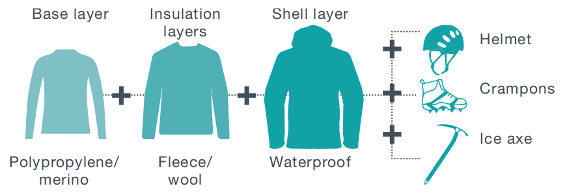May to November
Introduction
Find out hiking Fantham Peak from May to November.You need special skills and preparation to climb Fathams Peak from May to November/December. There are increased risks from snow, ice, avalanche terrain, bad weather and sub-zero temperatures.
Track standard: Route
Track surface: Track is covered in snow and very icy in sections. Track is not marked.
Suitable for: People with mountaineering skills, equipment and experience. You must:
- have the equipment and skills to prevent a slide on icy terrain
- know where avalanches are a risk and be able to rescue someone if an avalanche occurs
- have the clothing for sub-zero temperatures and be able to survive if the weather gets worse.
Dress for cold, windy and icy conditions

Conditions can change quickly. Layer your clothes to trap warm air in and keep cold wind out. Start with a base layer of polypropylene/merino, add an insulation layer of fleece/wool and finish with a waterproof shell layer.
Expect ice on the track between April and November/December. A helmet, crampons and ice axe are essential, as is competency using them. The main cause of death on Mount Taranaki is slipping on ice.
Be avalanche alert
Avalanches are a hazard. Know the avalanche forecast.
Take an avalanche transceiver, avalanche probe and snow shovel, and be competent using them.
Take these essentials
- Plenty of drinking water and food
- Waterproof jacket and pants, hat, gloves, sunscreen, and warm, layered clothing
- Sturdy tramping or mountaineering boots
- Crampons, ice axe and helmet
- Avalanche transceiver, avalanche probe and snow shovel
- Mobile phone, personal locator beacon (PLB), head torch and spare batteries
- Map, compass and/or GPS
There is nowhere in Taranaki to hire alpine equipment – bring your own or hired alpine equipment.
Make a plan
Talk with someone at the Egmont National Park Visitor Centre who knows the current conditions.
Check the latest:
